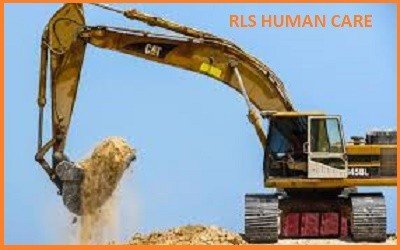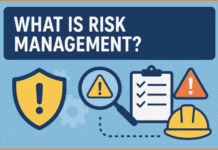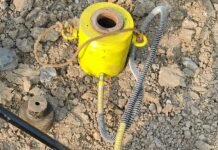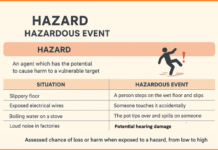Excavation work is an integral part of construction projects, but it poses risks if safety measures are not strictly followed. The Indian Standard IS 3764 provides guidelines to ensure safety during excavation activities. One critical aspect of these guidelines is maintaining a clear edge around excavations to prevent accidents and ensure the stability of the work environment.
1. Keeping the Edge Clear
1.1 Placement of Tools and Materials:
Care must be taken to keep tools and materials, such as wheelbarrows, shovels, picks, tiles, cement, and lumber, at a safe distance from the edge of the trench. This precaution helps prevent these items from inadvertently falling into the trench, posing hazards to workers below.
1.2 Restrictions on Stacking and Loading:
No material or load should be placed, stacked, or removed near the edge of any excavation, shaft, pit, or ground opening. This restriction is essential to avoid endangering workers positioned below the excavation site.
2. Safety Measures for Plant and Machinery
2.1 Heavy Equipment Distance:
Heavy machinery, including excavating equipment and road traffic, should be kept at a distance from the excavation edge. This distance should be no less than the depth of the trench or at least 6 meters for trenches deeper than 6 meters. This measure prevents the added load from compromising trench stability.
2.2 Power Shovels and Draglines:
The use of power shovels or draglines within a trench can rapidly destabilize trench banks due to the violent thrusts or blows delivered during operation. Continuous monitoring is required to identify and mitigate any emerging risks.
2.3 Vehicle Operation Near Excavations:
Vehicles such as trucks or wagons operating around trenches must be controlled by an experienced foreman or supervisor. Vehicles should not be driven near excavation edges to prevent accidental falls. Supervisors must ensure that vehicles are correctly positioned during loading to avoid impacting the trench walls and to watch for potential slides or falling boulders.
2.4 Stop Blocks:
Adequate and well-anchored stop blocks must be installed on the surface to prevent vehicles from accidentally falling into excavation pits.
3. Handling Tools Safely
Workers must be equipped with proper tools suitable for the task. For break-down work, tools of sufficient length should be provided. Workers should be trained to recognize the dangers of sudden material movements that could cause loss of balance or exposure to falling objects. Adequate spacing between workers is essential to prevent accidental injuries from the tools of fellow workers.
4. Means of Access and Escape
Proper means of access and escape should be established to ensure safe entry and exit from excavation sites. This includes secure ladders, ramps, and toe-boards to prevent material rollbacks into the excavation.
Conclusion
Adhering to the safety measures outlined in IS 3764 is crucial for minimizing risks associated with excavation work. By maintaining clear edges, controlling heavy equipment operations, and ensuring proper use of tools and access routes, construction sites can significantly enhance the safety and well-being of their workforce.





